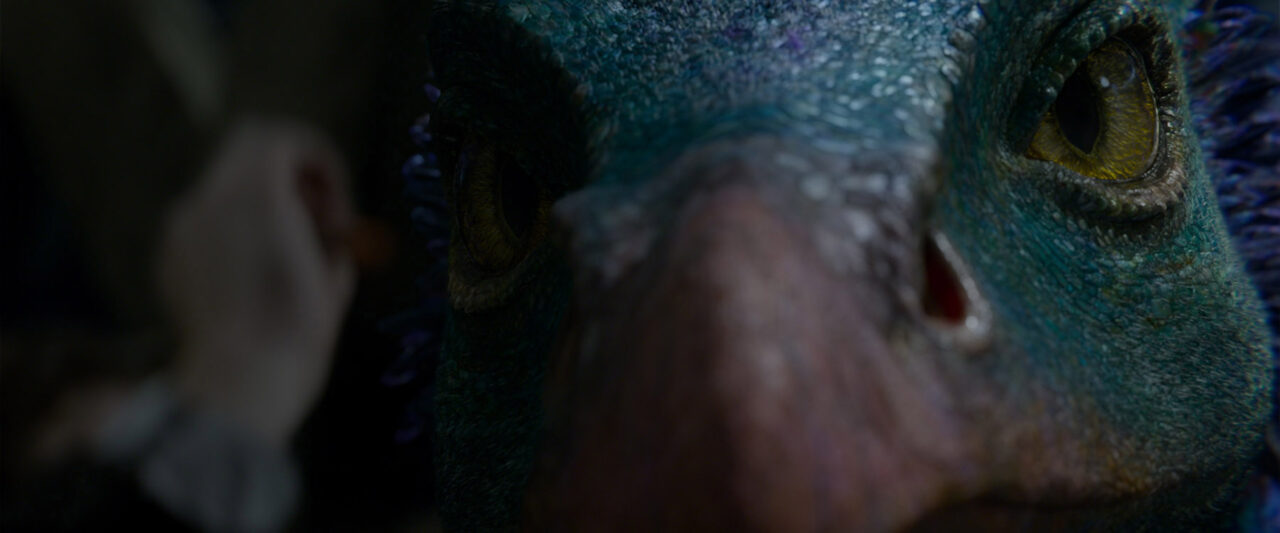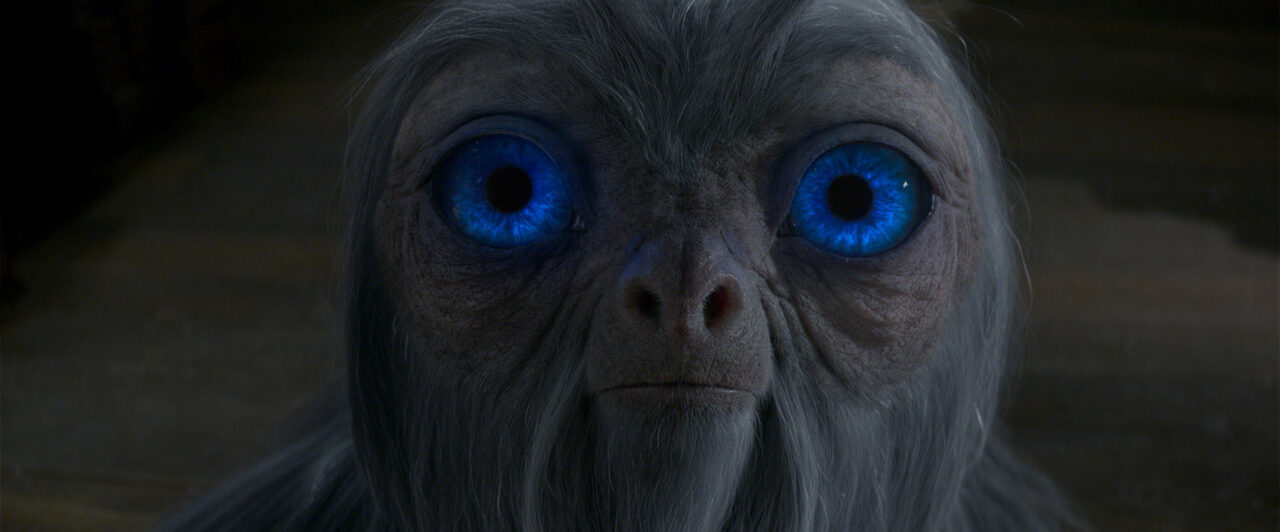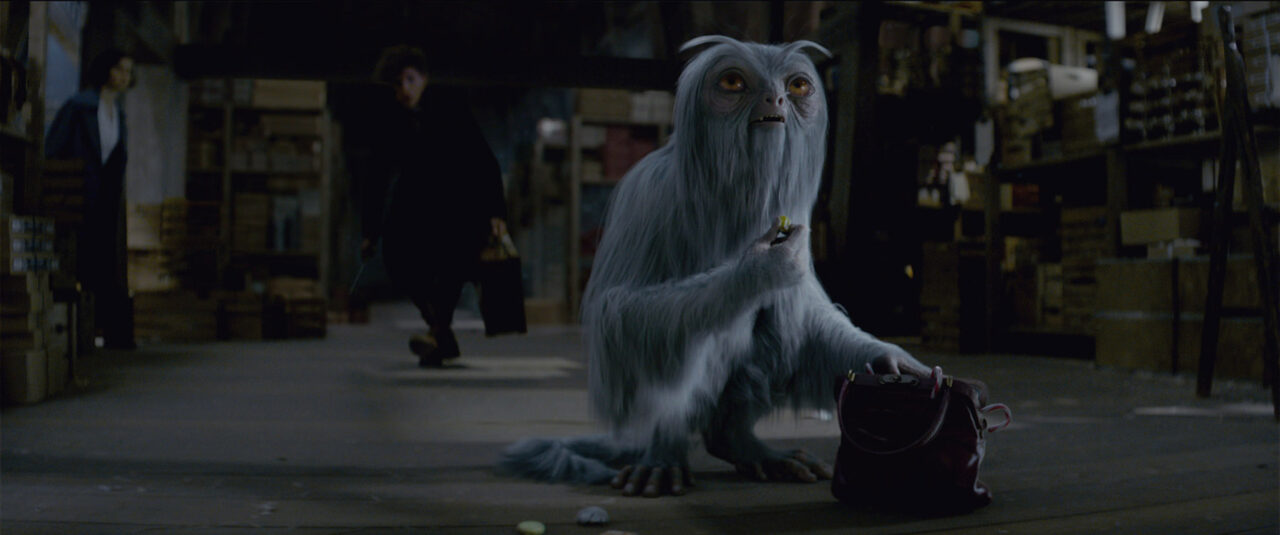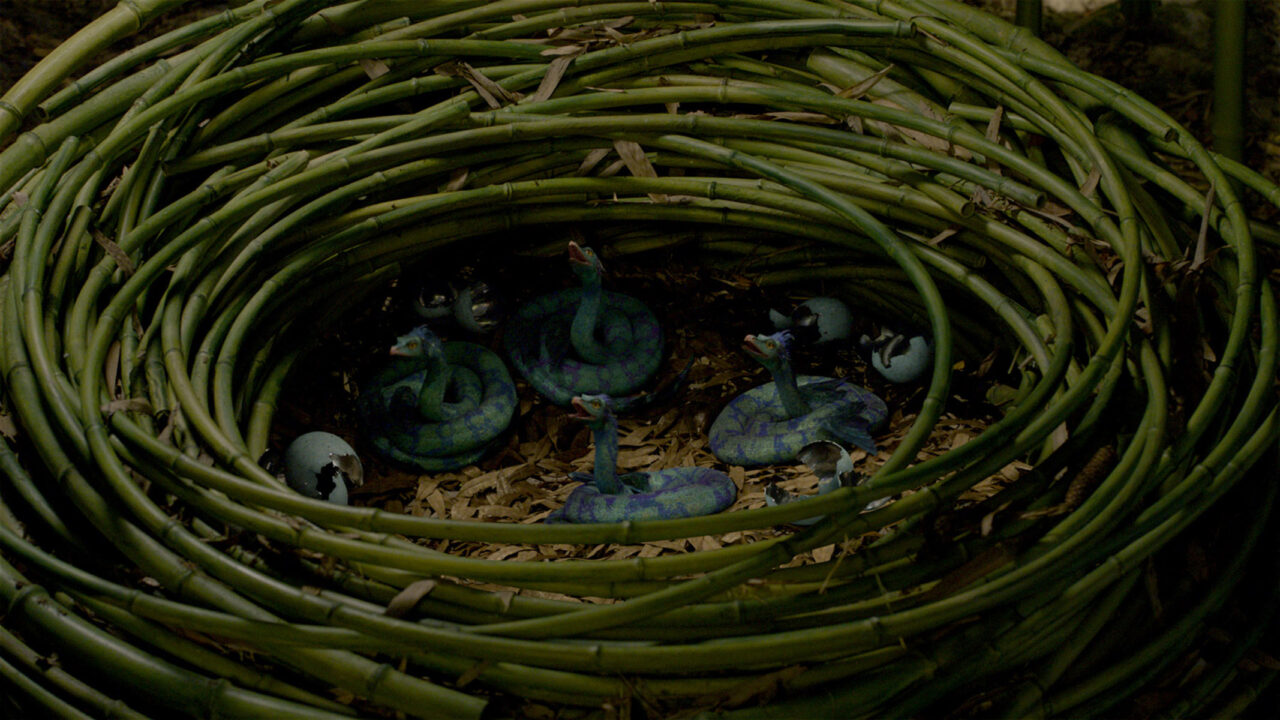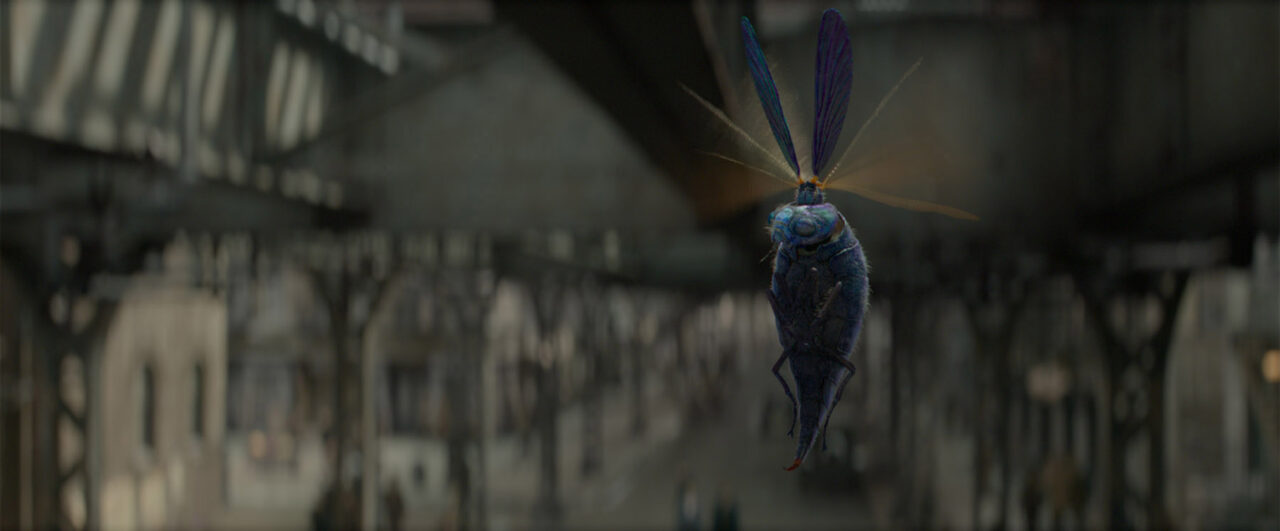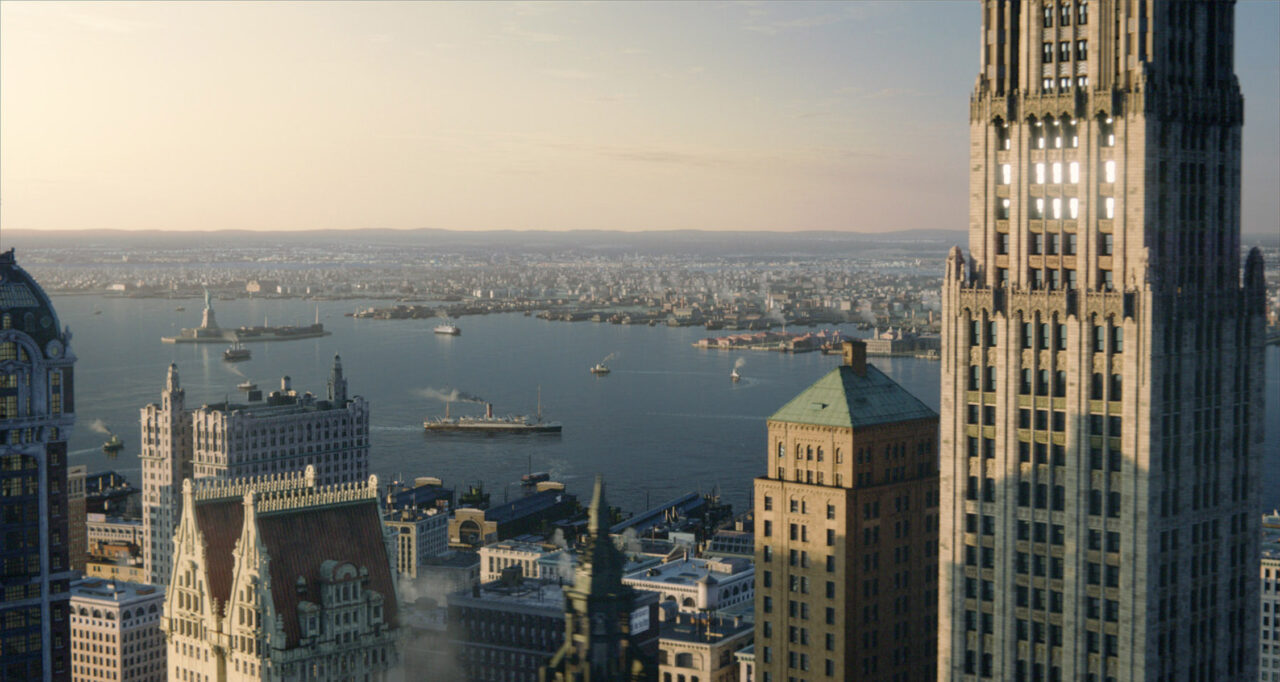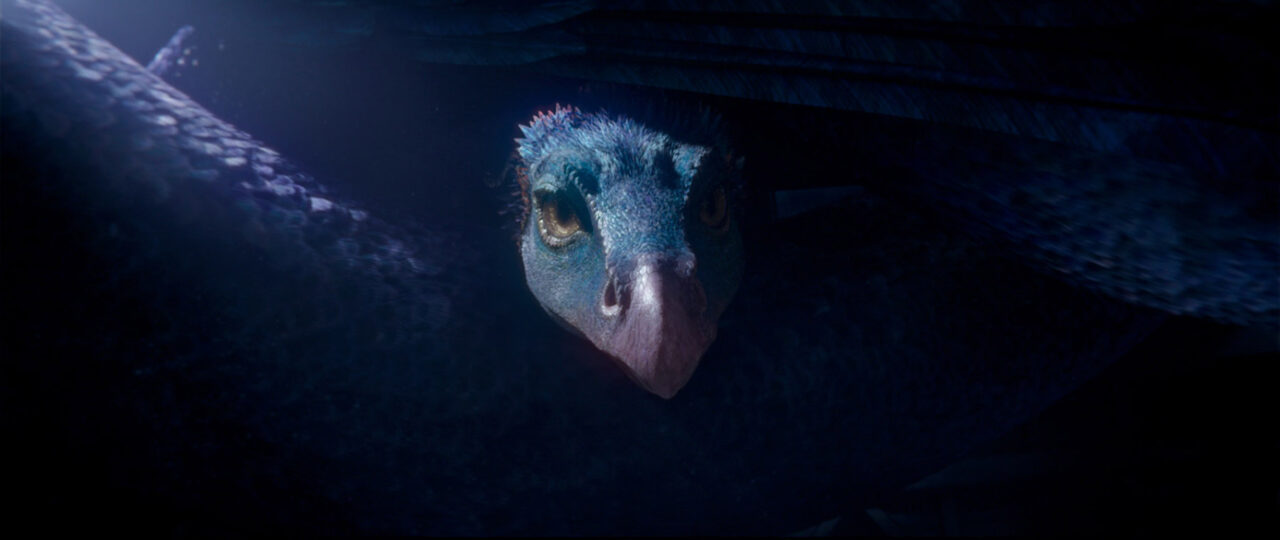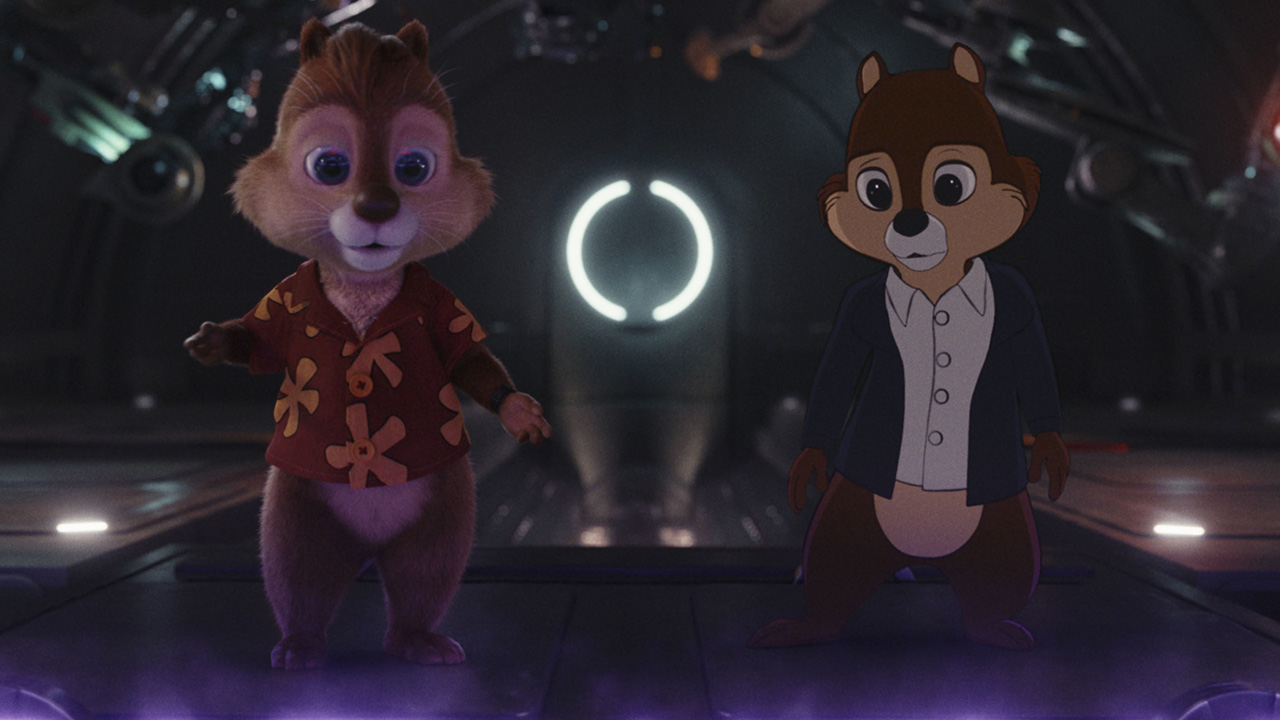Led by VFX Supervisor Ferran Domenech, MPC worked closely with Production VFX Supervisors, Tim Burke and Christian Manz, completing more than 220 shots. MPC worked on all 8 of the Harry Potter movies and were well versed in creating magical effects for JK Rowling’s world. For Fantastic Beasts the team’s scope of work ranged from environment extensions, a full 3D environment of prohibition era Manhattan and magic effects. However, the majority of the work was largely focused on the creation of three of the film’s beasts in a major set piece.
Rowling’s story introduces Magizoologist Newt Scamander on an expedition to New York City in 1926 carrying endangered magical creatures inside a special suitcase. MPC was given the task of creating three of these magical creatures. The majority of the production shoot took place at Leavesden studios in northwest London, home of the original sets for the Harry Potter saga, and some on-location shoots in Birmingham for the interiors of a department store where the escaped creatures hide.
MPC’s work started right at the beginning of the film, creating the WB logo and titles; set and crowd extensions for the arrival of Newt to New York and the creation of a detailed transatlantic boat. The most challenging work in the opening sequence was recreating New York’s Lower Manhattan, fully modeled and rendered for a flyby establisher shot. MPC’s team had to conduct in depth research into Manhattan of the period as many of the buildings had changed, in order to recreate the area in full CG.
In one of MPC’s big action pieces, two creatures; the Demiguise and Occamy completely destroy the attic of a department store where they are hiding. MPC’s VFX Supervisor Ferran Domenech said, “The first creature we began work on was the Demiguise, a small ape-like magical creature covered in long silver hair that can turn invisible and read the future. To create the challenging long flowing hair of the Demiguise, we used our proprietary Furtility groom technology, controlling it using strands of simulated cloth geometry. This method allows for the hair to move naturally and interact with the creature’s arms, legs and the environment around it.” To create the Demiguise’s invisibilty effect, MPC developed a new texture projection tool for Furtility to be able to paint the background image over the fur and have it move realistically. To animate the Demiguise the team used motion capture shot at our MPC studio as the base for the body movement on several shots, then Mo-cap was enhanced by the animators to complete the performance, and used key-frame animation for the facial expressions.
The most challenging creature to realize was the Occamy; a gigantic feathered snake with the wings of a bird and dragon-like facial features. Domenech said, “To build this magical beast, the asset team at MPC had to create five different variations of its body to be able to fill the space in the attic it resides. This creature had to perch and coil around the beams of the attic and look almost impossibly long, therefore splitting the body into different pieces was a must to be able to fill the space and match the carefully designed compositions of each shot.” The snake rigging technology that was previously developed for the Harry Potter films was refined and put to good use for the Occamy with the added challenge of covering the entire body in feathers using MPC’s Furtility tool.
In the sequence, the Occamy is startled by Newt and its serpentine body gets tangled on the structure of the roof, sliding and shaking it apart as it tries to free itself. MPC built a detailed CG set extension of the attic which included structural beams, bolts and nails, wood paneling and an outside layer of shingles. MPC’s FX team then used its proprietary Kali destruction technology to destroy the attic. The action comes to an end when the Occamy is trapped inside a tea pot using a CG cockroach as bait. One of the magical attributes of the Occamy is its ability to fill the space where it resides, so the fully feathered creature had to be able to scale from the size of a building to the size of a mouse at will. To create this complex transformation, MPC’s Furtility tool was adapted so it could scale interactively.
Finally, MPC worked on the Billiwig, a small lighting fast iridescent magical bug that can change its flight mode from dragonfly to propeller plane at will. “This little creature has lots of character and was great fun to bring to life. The Billiwig makes appearances throughout the film, in the foreground for some shots and appearing in the background for others, always curious about what is happening around it,” said Domench.
In the final sequence, MPC worked on set and crowd extensions for the pier where Newt departs and boards the Transatlantic ship back home. Artists extended the practical set to look like the emblematic Pier 52, teaming with a CG crowd of New Yorkers and animated cars and trams.
